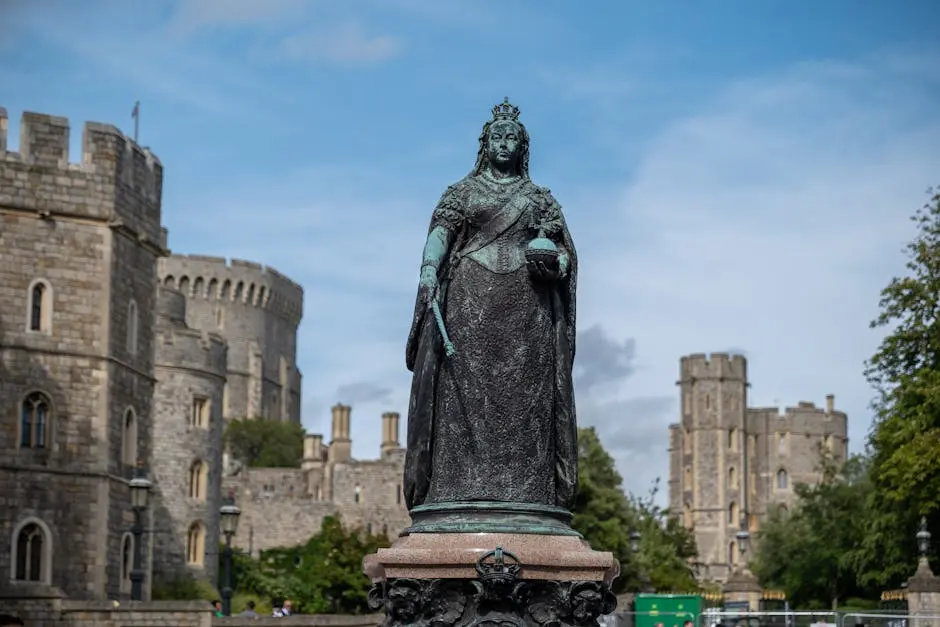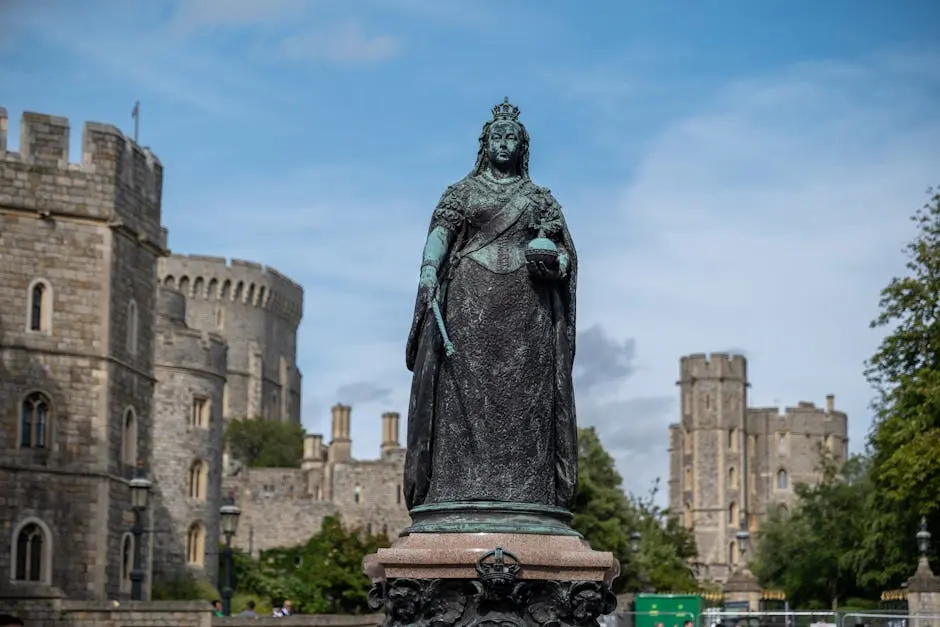England, with its rich history and cultural heritage, boasts some of the world’s most remarkable UNESCO World Heritage sites. From ancient ruins to stunning landscapes, each site offers a unique glimpse into the past and showcases the grandeur of human achievement. Let’s embark on a journey through England’s must-see UNESCO sites.
1. The Tower of London’s Historic Legacy
Standing majestically on the banks of the River Thames, the Tower of London is a symbol of Britain’s medieval past. Explore the tales of imprisonment, execution, and monarchy within its stone walls. It was originally built by William the Conqueror as a demonstration of Norman power, emphasizing its rich historical significance. Over the centuries, it has served various purposes including as a royal palace, a fortress, and even a treasury.
The Tower is perhaps most famous for its dark history of imprisonment, standing witness to the fate of many high-profile prisoners. The stories surrounding them have become legendary, contributing to the sense of mystery that envelops the Tower. Walking through the grounds, you can almost hear the whispers of the past, bringing the history to life. Additionally, the Crown Jewels housed within the Tower offer a glittering glimpse into the opulence of the British monarchy.
Today, the Tower of London is a must-visit landmark, drawing millions of visitors from around the world who come to admire its architecture and soak in the intriguing stories of English history. Exploring the White Tower, the oldest medieval building in England, offers insight into its architectural evolution. The White Tower houses the Royal Armouries collections—a true testament to medieval warfare and defense strategies.
2. The Timeless Beauty of Stonehenge
Shrouded in mystery, Stonehenge is an ancient monument that has intrigued historians and visitors alike. Learn about its origins and the various theories that surround this fascinating site. Constructed using stones that weigh up to 25 tons, its creation is a testament to human determination and ingenuity from prehistoric times.
Theories about the purpose of Stonehenge range from being a burial ground to a spiritual gathering spot, leaving much to the imagination. Its alignment with the rising and setting sun during the solstices adds to the wonder, suggesting its significance to ancient people’s understanding of the cosmos. Fascinatingly, recent studies suggest the stones might have originated from the Preseli Hills in Wales, posing further questions about ancient transportation methods.
3. The Majestic Westminster Abbey
A masterpiece of architecture, Westminster Abbey is a site of royal coronations and weddings. Walk through its hallowed halls and experience the rich history that spans centuries. Established by Benedictine monks in the mid-10th century, it remains a living part of British heritage.
Westminster Abbey has been the coronation church since 1066 and is the final resting place of 17 monarchs, making it a monumental focal point in British history. Its breathtaking Gothic architecture is an awe-inspiring sight, housing over 1,000 years of British history within its walls. Amongst its significant roles, the Abbey also hosts the Poet’s Corner, memorializing literary greats like Charles Dickens and Geoffrey Chaucer.
Today, the Abbey continues to be a functioning place of worship, while simultaneously attracting visitors interested in its historical and cultural narrative. It’s a place where past and present meet, where the echoes of history are met with the bustling life of modern London. For those fascinated by royal and common history alike, visiting Westminster Abbey is truly an unforgettable experience.
4. The Architectural Splendor of Bath
Known for its Roman-built baths, the city of Bath is a treasure trove of Georgian architecture and history. Explore the elegant streets and discover the ancient Roman influence. You can immerse yourself in history at the Roman Baths, where the dialling Roman engineering mix with Britain’s natural thermal springs.
The city is famed for its honey-colored Georgian architecture, with the Royal Crescent and Pulteney Bridge standing out as iconic symbols of Bath’s architectural elegance. The restoration efforts and preserved history of the region make it an architectural delight for tourists and photographers alike, transporting you back in time. Additionally, the historic Abbey Church House, a landmark adjacent to the city, is a fine example of Gothic craftsmanship that adds to Bath’s allure.
Moreover, Bath’s vibrant atmosphere makes it more than just a historical site—it is a thriving cultural hub. Visitors can enjoy a wide range of festivals and events throughout the year, celebrating everything from literature to culinary arts. Whether you’re drawn by the sheer scale of its renowned historic Roman baths or the allure of its charming Georgian streetscapes, Bath is a city that promises unforgettable experiences.
5. The Stunning Jurassic Coast
Stretching along the southern coast of England, the Jurassic Coast offers breathtaking cliffs and fossil-rich landscapes. It’s a paradise for both hikers and geology enthusiasts, teeming with history that dates back 185 million years. The coastline itself tells a fascinating story of the Earth’s geological history and the forces that have shaped our planet.
With charming coastal towns and sandy beaches, the Jurassic Coast invites visitors to explore its natural beauty. Landmark sites like Durdle Door and Old Harry Rocks provide stunning vistas and photographic opportunities, captivating both amateur and professional photographers. Furthermore, the area is famed for fossil hunting—visitors can uncover history with each fossil they find and learn about the prehistoric creatures that once roamed the Earth.
For the adventurous, a hike along the South West Coast Path offers a chance to embrace the region’s unspoiled landscapes and fresh sea breezes. The juxtaposition of towering cliffs against the bright blue waters creates an awe-inspiring scenery that is classic of England’s scenic natural beauty. Spending a day at the Jurassic Coast allows you to connect with nature and the ancient past, offering a serene escape from urban life.
6. The Enigmatic Hadrian’s Wall
Spanning the north of England, Hadrian’s Wall is a monumental Roman structure. Discover the defensive fortifications and the intriguing stories behind its construction. Built to protect the Roman territories from invading tribes, the wall signifies the power and reach of the Roman Empire at its height.
Stretching across 73 miles, this ancient site offers scattered ruins where visitors can learn about the lives of Roman soldiers and engineers. Walking along the wall provides a unique insight into Roman military and architectural prowess. Key locations along the wall, such as Housesteads and Vindolanda, offer preserved archaeological evidence of Roman life, immersing you in history quite unlike any other. Exploring Vindolanda, a well-preserved Roman settlement, reveals insights into the daily lives of its ancient inhabitants.
Today, Hadrian’s Wall remains an important historical symbol. It not only exemplifies Roman engineering marvels but is also a breathtaking scenic route attracting hikers from all over the world. Visitors can indulge in the captivating views overlooking the border between Scotland and England, making it a memorable journey through history and nature combined.
7. The Cultural Riches of Canterbury Cathedral
As the spiritual center of the Church of England, Canterbury Cathedral is an architectural marvel. Delve into its religious significance and the fascinating tales of pilgrimage. Dating back to 597 AD, it is one of the oldest and most famous Christian structures in England, forming part of a World Heritage Site.
As you explore the Cathedral, you’ll encounter stories about influential historical figures like Saint Thomas Becket, whose murder transformed Canterbury into an important pilgrimage site. The dramatic gothic arches and stained glass windows depicting insightful narratives captivate visitors, combining visual beauty with profound religious symbolism.
In addition to its religious importance, the Cathedral’s role in historical events firmly places it at the heart of England’s cultural and spiritual landscape. Modern visitors can experience this heritage firsthand and marvel at the cathedral’s intricate stonework that has elegantly withstood the test of time. This magnificent building continues to hold services and cultural events, affirming its timeless appeal.
8. The Lavish Gardens of Blenheim Palace
With its sprawling gardens and grand baroque architecture, Blenheim Palace is a UNESCO site that captivates with its beauty and history. Discover its connection to Sir Winston Churchill, who was born in this majestic setting. The palace signifies a prime example of 18th-century English architecture, surrounded by an equally celebrated landscape.
Exploring the extensive gardens, designed by Capability Brown, offers an idyllic escape into nature. The gardens are meticulously planned with lakes, bridges, and hedgerows that delight nature lovers and landscape enthusiasts. Take a leisurely stroll and indulge your senses in the serene tranquility that echoes around you.
Inside the palace, opulent state rooms house an extensive art collection showcasing England’s rich cultural heritage and the historical backdrop of the Marlborough family. Walking through these grand rooms, the blend of history and artistry provides visitors with an engaging experience that educates while it entertains, making Blenheim a location rich in history and natural beauty.








